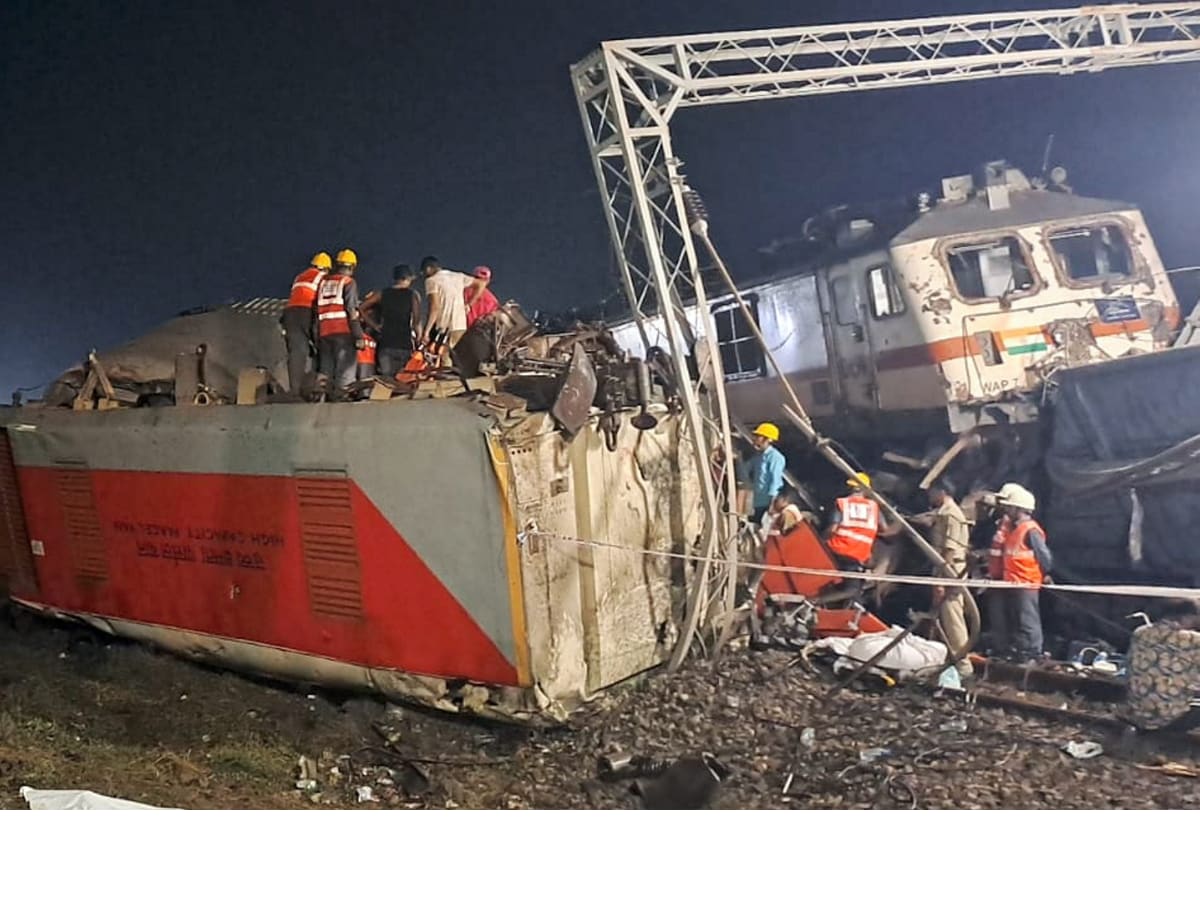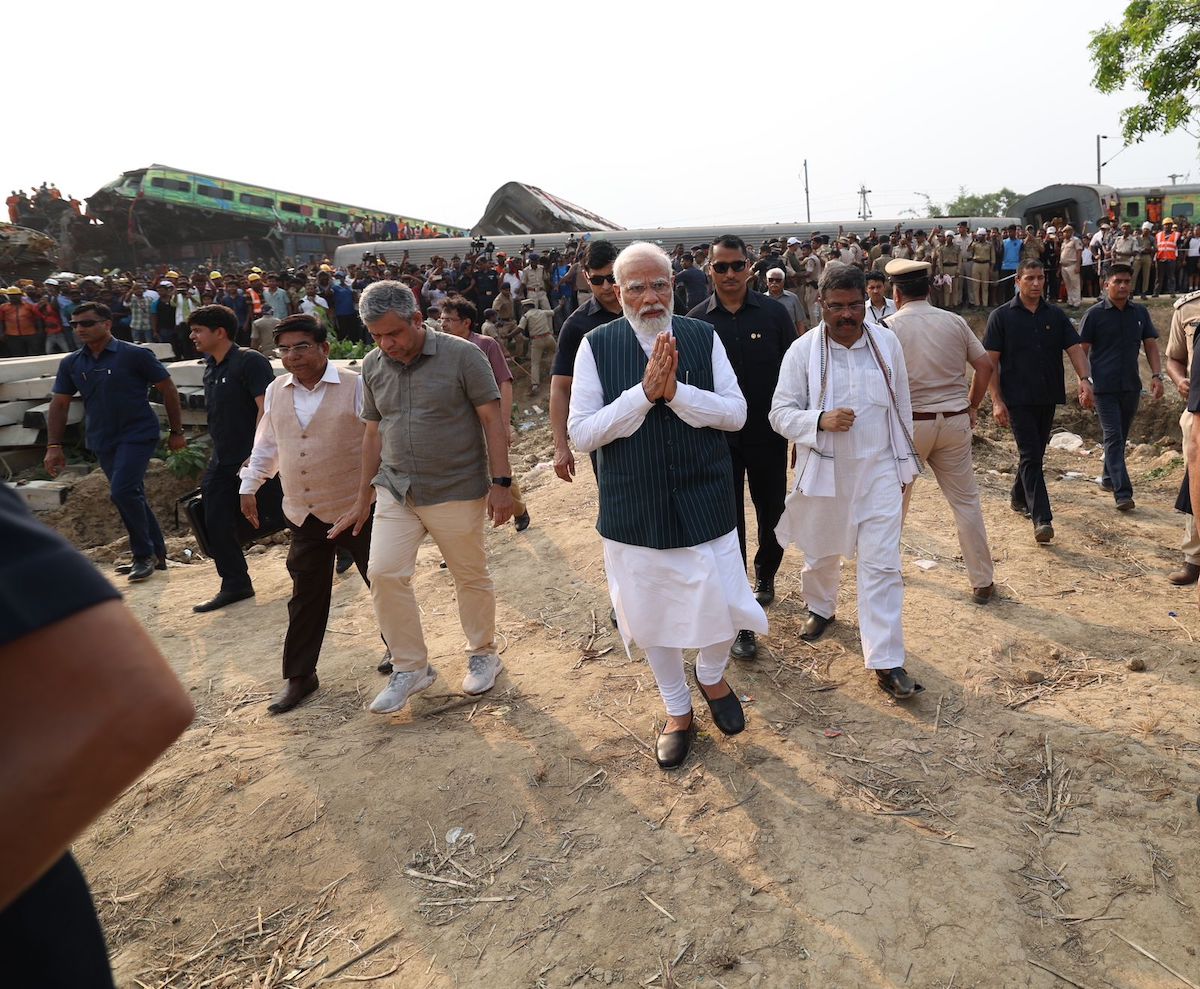Coromandel Express Accident: 4th Major Derailment In Two Decades Raises Concerns Over Signal Error, Anti-Collision Devices
Locals heroically assist injured with hospitals and blood donations

Preliminary investigations indicate that a signaling mistake could turn out to be the primary cause of the crash of a rapid passenger train against a stationary items train and the ensuing derailment of an additional passenger train in a heinous occurrence in Odisha.
It is one of the worst train accidents in the country, which took at least 295 lives.

The Shalimar-Chennai Coromandel Express (12841), the Sir M Visvesvaraya-Howrah Superfast Express (12864), and a goods train were engaged in a catastrophic railway disaster near the Bahanaga Bazar station in the Balasore district of Odisha on Friday evening.
Over 1000 people have been injured as a result of the disaster. The Coromandel Express reached the loop line, derailed, and collided with the freight train, based on a preliminary investigation report completed by five Railways supervisors.
Its shredded bogies piled up on the next line, where it collided with the inbound Visvesvaraya-Howrah Superfast Express, causing it to derail as well. All of this happened in a matter of minutes.
According to the Railways preliminary inquiry, “…signal was given and pulled out for up main for 12841 (the Coromandel Express), but its train entered the loop line” and crashed with the freight train that was in the loop line.

The loop lines are built in the station area to improve railway operations by accommodating additional trains, comparable to service lanes on the road that can be used to park stationary automobiles.
These loop lines, which are typically 750 meters long, serve as a parking lot for trains, usually freight trains. Meanwhile, Visvesvaraya Superfast Express and two of its passenger coaches were derailed and capsized while traveling the main line (down), according to the inquiry report.
In particular, the Coromandel Express has derailed a total of four times in the last 21 years. The fourth took place on June 2, 2023, claiming close to 300 lives.
The following are the other three occasions when the Coromandel Express train derailed:
1) Coromandel Express derailed at Nellore in Andhra Pradesh on December 6, 2011, killing 32 passengers and injuring several more.
2) Coromandel Express derailed near Jajpur Keonjhar Road on February 13, 2009, killing 16 people and injuring 161 more. The reason for the collision is yet unknown.
In Odisha’s Jajpur district, 13 bogies derailed when changing tracks. The train was moving quickly, and the engine turned turtle shortly after passing through the Jajpur Road railway station.
3) Coromandel Express derailed on March 15, 2002, near the Padugupadu road over bridge in Nellore district. At least eight compartments of the train headed for Chennai were damaged.
However, no fatalities were reported, although approximately 100 individuals were hurt. The disaster was initially blamed on the poor state of Nellore’s main rail route.
The train derailed roughly 100 km from the site of the 2009 disaster in Odisha. Passengers who were injured were brought to medical facilities in Gopalpur, Balasore, Bhadrak, Khantapara, and Soro.
In the aftermath of the horrific triple train tragedy, Odisha CM Naveen Patnaik ordered a one-day state mourning on Saturday. The Railways issued a grant assistance of 10 lakh rupees for the deceased’s next of kin.
Rs 2 lakh for people who were seriously injured, and fifty thousand rupees for individuals who had lesser injuries.

Prime Minister Narendra Modi also expressed his sorrow over the disaster and promised additional grant assistance of Rs 2 lakh for the deceased’s next of kin and Rs 50,000 for those wounded by the PMNRF.
The Odisha train accident, one of the most serious in India’s history, has focused attention on rail safety. Opposition leaders asked why the trains involved were not equipped with the locally developed anti-collision ‘Kavach’ technology.
It was announced with great fanfare by the Modi government last year. The Railway Ministry said on Saturday the Kavach had still not been deployed along the disaster route.
When two trains appear to be heading for a collision, the Kavach TCAS deploys the automated brakes, stopping them in their tracks at a safe distance.
According to the most recent official data, Kavach technology, built at an expense of Rs 22 crore, spans just about 2.13 percent of India’s 68,000-kilometer railway network, or approximately 1,450 km.
While Kavach was introduced last year, Indian Railways has been developing a TCAS since 2012. After the specifications were finalized by the railways’ RDS organization, the proof-of-concept trials were conducted in October-November 2012.
TCAS was placed on the Lingampally-Vikarabad-Wadi plus Vikarabad-Bidar sections of the SC Railway zone. It primarily serves Andhra Pradesh, Telangana, and Maharashtra, as of March 2020.
Based on a government release, the technology was being tested over a 1,199-kilometer circuit in the same area at the time.
Various theories are floating around about the possible causes of the horrific accident near Balasore. The railway ministry insisted that the precise cause of this unusual crash would be revealed only after a thorough investigation.
Still, one fact stood out, the Coromandel Express entered the wrong track moments before the pile-up.
According to the railroads’ summary of the accident, “Up Train, No 12841 traversing Up main line encountered an accident and collided with a stationary freight train in Up circuit line at Bahanaga Bazar. The train was moving at a rapid pace across the station because it was not meant to halt.”
While no formal reports have been made regarding both the passenger and one freight train, sources say the Loco Pilot alongside the Assistant Pilot of the Coromandel Express have suffered serious injuries.
According to sources, the two are currently in intensive care and are receiving proper treatment from hospital authorities. The Loco Pilot who received a chest injury, plus the Assistant Pilot who got a knee injury, are fighting for their lives in the ICU.
However, for reasons of safety, they are currently treated in isolation, and hospital officials have refused to reveal their whereabouts. According to sources, the facilities where they are now receiving treatment will not be published for security reasons.
According to the source, the drivers of the freight train plus the other passenger train are secure. Fortunately, the goods guard of the freight train had left for a cup of tea while the Coromandel Express rear-ended it.
Residents of the Bahanaga Bazaar station vicinity in the Balasore district, where the crash occurred, were among the first individuals to save the injured. “I was with several buddies at a neighboring tea shop at 7 p.m.
“I was startled to hear a loud noise followed by people’s cries. We ran to the location and were astounded by what we saw.”
“We began rescuing the injured without delay. We also informed the police and railway officials,” a local who helped the victims stated.
“We helped at least 50 wounded passengers and utilized our vehicles to transport them to a nearby hospital. Some survivors were hunting for loved ones, but we couldn’t aid them because it was too dark,” another individual said.

A sixty-year-old man went to a medical facility to donate blood. “I arrived right here to offer blood, however, I was denied due to my age.”
“I urged my sons and family to come to the medical facility and give blood,” he explained. He was observed chatting with survivors and assisting them in making phone calls to their families.
“The majority of those rescued had misplaced their telephones and were helpless to reach their families to inform them of their situation. I did everything I could to help them,” he said.
Another person was observed caring for two youngsters whose parents had yet to be found. “I rescued this boy and took him to the hospital.”
“I encountered a girl who couldn’t find her parents. We’re attempting to contact their relatives,” she stated.
According to Bhubaneswar officials, 200 emergency vehicles, 50 buses, plus 45 mobile healthcare units, as well as 1,200 employees, were all present at the scene of the crash. The bodies were being transported to hospitals in various vehicles, including tractors.
Proofread & Published By Naveenika Chauhan




